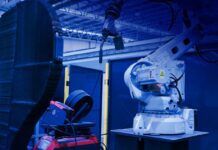A team of researchers from The Australian National University (ANU) has managed to successfully replicate a key step in the process of photosynthesis, which might lead to manufacturing hydrogen as fuel.

“Water is abundant and so is sunlight. It is an exciting prospect to use them to create hydrogen, and do it cheaply and safely,” said Dr Kastoori Hingorani, from the ARC Centre of Excellence for Translational Photosynthesis in the ANU Research School of Biology.
According to the news release by ANU, the researchers modified the well-known and much-researched Ferritin, a protein that can be found in almost all living organisms.
Ferritin stores iron and binds a certain haem group.
By removing the iron from the protein and replacing it with manganese, the researchers created something that closely resembles the water splitting site in photosynthesis.
As far as the haem group goes, the researchers replaced it with a light-sensitive pigment, Zinc Chlorine, so when they exposed the modified Ferritin to light, there was a clear indication of charge transfer just like in natural photosynthesis. In other words, the newly created protein displays the electrical heartbeat which is key to photosynthesis.
“This is the first time we have replicated the primary capture of energy from sunlight. It’s the beginning of a whole suite of possibilities, such as creating a highly efficient fuel, or to trapping atmospheric carbon,” said co-researcher Professor Ron Pace.
“That carbon-free cycle is essentially indefinitely sustainable. Sunlight is extraordinarily abundant, water is everywhere – the raw materials we need to make the fuel. And at the end of the usage cycle it goes back to water.”
The possibilities inspired visionary researcher Associate Professor Warwick Hillier, who led the research group until his death from brain cancer earlier this year.
“Associate Professor Hillier imagined modifying E. coli so that it expresses the gene to create ready-made artificial photosynthetic proteins. It would be a self-replicating system – all you need to do is shine light on it,” Dr Hingorani said.
Since the system uses a naturally-occurring protein and does not need batteries or expensive metals, it could be affordable in developing countries. As a zero-carbon replacement for petroleum products, hydrogen fuel truly has the potential to completely transform the economy, the researchers state.
Their work was published in BBA Bioenergetics.



















